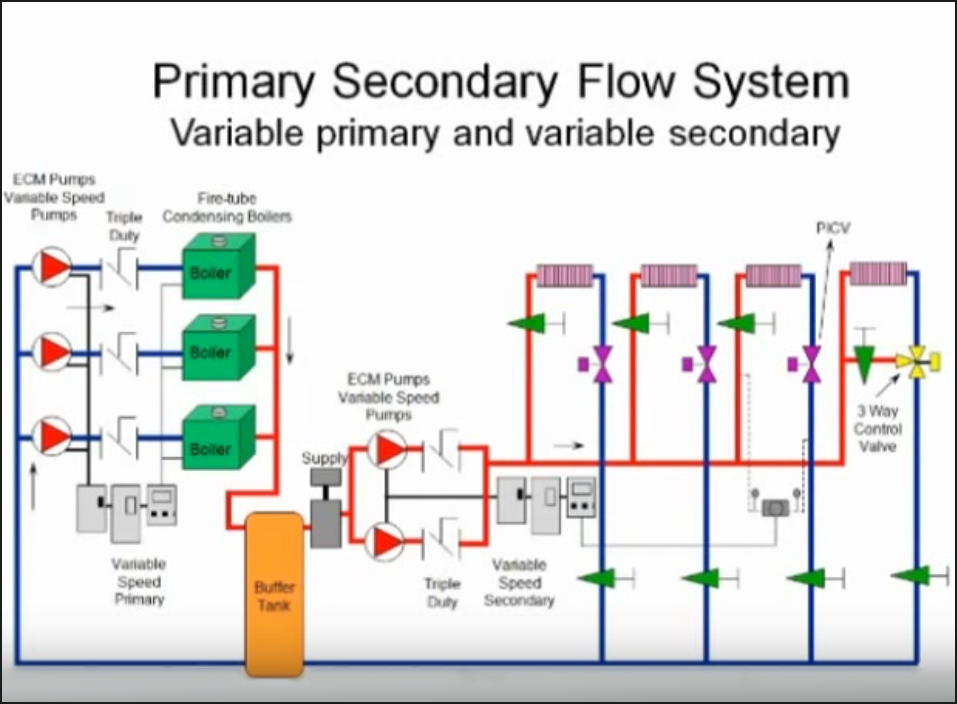Geothermal Well Drilling—Demystified Part 3: Thermal Conductivity Test
/By David Brown, Vice President of Yadkin Well Co, Inc.
Our test well is fully installed and grouted, and we've waited a full five days for the ground to cool down after all that drilling and compressed air. It’s finally time to begin our 48-hour thermal geothermal conductivity test (TGCT).
Figure 1. A form similar to this will be filled out by the well driller/tester and submitted to the thermal geothermal conductivity test (TGCT) and analysis agency. All of the bore hole information contained on this sheet is necessary for an accurate thermal analysis.
Throughout this 48-hour test, we circulate heated water between a thermal testing unit and the ground loop, collecting real-time data on the supply temperature and return temperatures. This information, along with the information shown in Figure 1, will be analyzed to determine the following details on the well field formation:
• Thermal Conductivity. This is a measure of how much and how quickly heat can travel through the geological formation at the test site. In ground source heat pump applications, the higher the thermal conductivity, the better.
• Thermal Diffusivity. This is the thermal conductivity of a material divided by its specific heat capacity and density. Geothermal installations favor lower thermal diffusivity values. However, the impact of thermal diffusivity is minor compared to thermal conductivity.
• Undisturbed Ground Temperature. This value reflects the ground's natural temperature, approximately 50 feet below the surface. Beneath this depth, the soil temperature remains more or less constant, regardless of season. The undisturbed ground temperature in the US is typically between 42°F and 75°F, depending on the location.
Required Equipment
The primary equipment required for a geothermal well test is a thermal conductivity test unit, and a diesel generator to power it throughout the test. The test unit is equipped with (1) a data logger, (2) water heater, (3) circulation pump, and (4) temperature, pressure, and flow sensors.
set-up configuration for a tgct test.
The generator must be large enough to maintain a steady flow of power to the test unit throughout the 36 to 48-hour test period. Accuracy is a high priority. Per ASHRAE, the standard deviation of the power should be less than or equal to 1.5% of the average power, with maximum power variation of less than or equal to 10% of the average power.
Test Set-Up
the tgct test unit houses the pump, water heater, and data logger.
Set-up for the test is relatively quick. The test unit will typically come with a clear set of instructions conveniently located inside the unit lid. We make our water and electrical connections to the unit and connect the data logger, verifying operation. With the system and piping filled with water, we turn on the pump (not the heater) and purge the system of air by running the pump for 45 minutes. Air will visibly bubble up in the unit's water-filled reservoir. While the water is flowing, we check for and repair any leaks at the supply and return connections on the side of the unit. We make sure any exposed pipe is fully insulated. We also record the undisturbed ground temperature during this time.
Heating. Testing. Data Logging.
After 45 minutes of air-purging, it’s time to begin the test. We switch on the heating elements submerged in the reservoir and let the test unit do its thing. The International Ground Source Heat Pump Association (IGSHPA) requires 15 - 25W of heat per foot loop pipe for testing. For 500 ft well, we typically inject 20W per foot into the loop, a total of 10,000 W/hour of heat throughout the test. The generator should have at least two to three times the required heat capacity to minimize temperature spikes, which will skew the data.
after air purging the well, the test operator switches on the heating elements.The International Ground Source Heat Pump Association (IGSHPA) requires 15 - 25W of heat per foot loop pipe for testing.
Before leaving the jobsite, we dress the test unit and connected piping in the custom-fitted jacket provided by the testing agency. Over the next 36 to 48 hours, the data logger will record the supply and return temperatures in 5-minute intervals. We will check on the unit once over the next 24 hours to make sure it is operating as it should, and that the generator has enough fuel to complete the test.
The loop temperature will generally climb 30°F to 40°F before stabilizing. However, the goal is not to reach a specific temperature but to determine how many Btus of heat the loop transfers per hour to the formation. This value (the thermal conductivity) usually proves to be somewhere between 1.00 and 2.00 Btu/hr-ft-°F. While this may seem like a small range, a few hundredths of a Btu in thermal conductivity can have a significant impact on a well field's overall performance. Remember, this is just one of perhaps over a hundred identical wells that may be installed in a single application.
The test unit must be fully insulated for the duration of the test.
Once the test is complete, we turn off the equipment, drain the test unit, and wait for the test unit provider to analyze the data. In about a week, we will receive a seven or eight-page report that provides an overview of the text procedures and analysis, along with our most sought-after information: thermal conductivity, thermal diffusivity, and the undisturbed formation temperature. This report will be shared with the mechanical engineer, who will use it to finalize the well field design.







